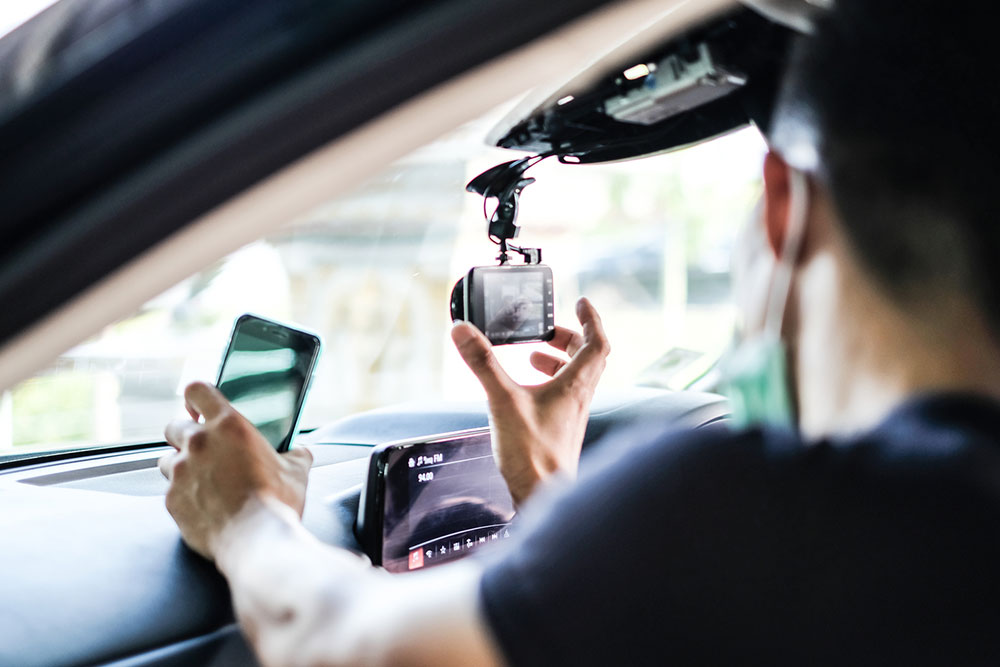8 common mistakes to avoid when using dash cams

Dash cams are one of the most resourceful tools in vehicles. These cameras are invaluable as they record various unpredictable scenarios that take place on the road when one is driving, which can be used as critical evidence later. Dash cams are useful both for legal issues (during accidents) and for claiming auto insurance after accidents. Nevertheless, certain installation, maintenance, and usage mistakes can reduce the effectiveness of dash cams.
Installing the camera improperly
Improperly installed or placed dash cams are of little use as evidence. When a dash cam is not installed correctly, the lens cannot capture all the visuals at once. This obstructed view causes the camera to get the balance wrong between capturing the dashboard, the sky, and the road. Installment issues include loose wiring, issues with how the switches are placed, issues with routing, and cable-related problems within the vehicle. Essentially, the camera must capture as much of the road as possible at any given point when the vehicle is being driven. The cables of the camera or the ones within a given vehicle must not hinder the deployment of the airbags. One can get an expert to securely, discreetly, and safely place the dash cam in their vehicle.
Not backing up camera data
As stated above, the data recorded in a camera will be used for critical matters. This is why one has to keep refreshing the storage space of the SD card stored within the dash cam. After using a new dash cam for a while, its space will fill up, and no additional space will be available to store the new footage. To avoid this problem, people can back up the data of their dash cam to another drive before re-installing the cam in their vehicle. At any given moment, the dash cam must only record and store data from the most recent events. Without regularly backing up the camera’s memory card, this will not be possible. Therefore, backing up the visuals captured by the camera in a common video format on another device is essential.
Forgetting to format the camera’s SD card
Like most pieces of hardware, the SD card in dash cams also needs constant updates. Automotive experts recommend vehicle owners to format their SD cards at least once every 6 to 12 months. Not doing so leads to issues such as corrupted data and a lack of storage space when vehicle owners will need the visuals of their dash cams the most. Certain premium dash cams come with an “auto-format” feature. This feature automatically formats the SD card and backs up the data to a safe cloud drive. On the other hand, certain dash cams overwrite the data on SD cards. They replace old information that is likely to be of no use with brand-new, recent information.
Not cleaning the camera and the windshield regularly
Maintenance is one of the more critical aspects of how long a given hardware device will last and how reliably it will function. Therefore, the least people can do to maintain their dash cams is to clean them regularly. One must also clean the dashboard and windshield of their vehicles regularly as those also collect dirt and dust, which, in turn, get transferred to the lens of the camera. The camera lens must always be crystal clear and transparent to avoid any distortion of the visuals captured on the device.
One can use soapy water or other solutions recommended by the manufacturer to clean the dash cam.
Exposing the camera to sunlight for prolonged periods
Dash cams, especially those that contain lithium-ion batteries, cannot take extended sun exposure as they can get overheated and damaged. So, people should reduce the time their car is parked in a sunny spot. The vehicle’s windshield attracts heat and energy, and letting the dash cam get heated can result in excessive energy getting transferred to the camera and damaging it.
Forgetting to update firmware and software
Dash cams come with several smart features and a host of functionalities controlled by built-in software tools. These software and firmware need to be updated constantly so that their functionality evolves with time. Not doing so can drastically reduce the scope of the camera’s usage over time.
Forgetting to remove and safely store the camera when unused
One does not always have to have their dash cams switched on and running in their vehicle. Relentless usage can also reduce their functionality. Therefore, when not using it, place the camera in a cool, dry place and take out its batteries and SD card.
Removing the camera from the vehicle frequently and cleaning it, and storing it in a clean and dry place are important maintenance practices for dash cams.
Not using high-quality memory cards
Poor-quality memory cards tend to corrupt and distort the data stored within them over a period of time. Therefore, one must use premium SD cards from renowned manufacturers in order to avoid this problem.


